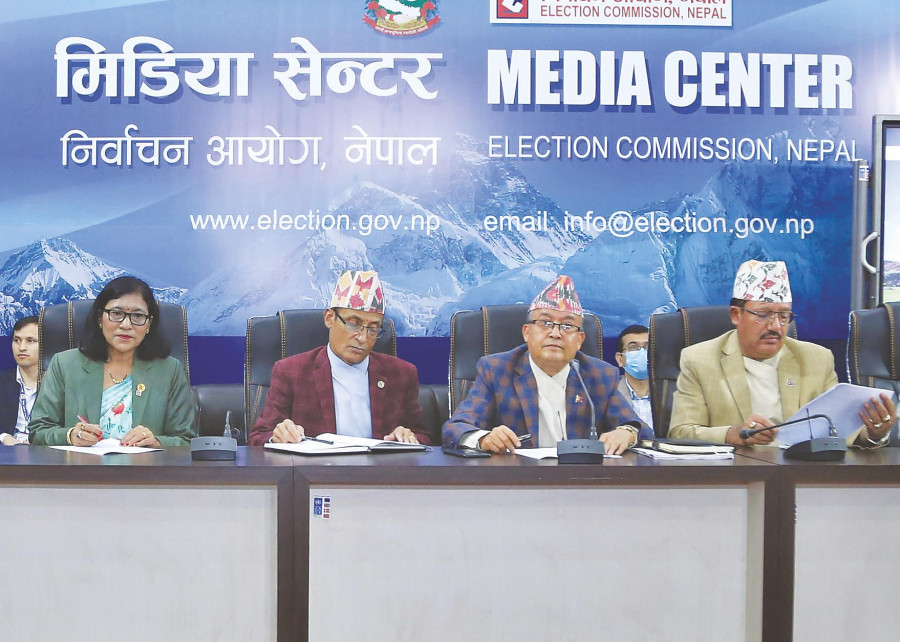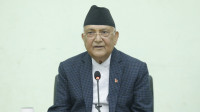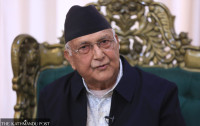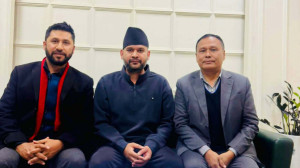Politics
Elections announced for November 20
Around 18.6 million voters estimated to have been registered for the upcoming elections, with around 1 million added since the May 13 local level polls. Election Commission says 107 days enough for preparations.
Tika R Pradhan
The government on Thursday decided to hold general and provincial elections on November 20.
A minister told the Post that the Cabinet meeting decided to conduct the polls on November 20 in a single phase as per the recommendation of the Election Commission. The government decision comes a day after the five parties in the ruling coalition reached an understanding on holding the elections on the said date.
Political parties have agreed on continuing the current House until a day before the nomination filing.
“Discussions are going on,” said Gyanendra Bahadur Karki, spokesperson for the government while informing reporters about the announcement of the election date. “Our [coalition’s] general understanding is that the term of the House will expire once the nominations are filed.”
The Election Commission on July 6 had recommended November 18 for both the general and provincial elections in a single phase. In 2017, federal and provincial polls were held in two phases—on November 26 and December 7.
The poll body now has 107 days for the preparations, even though the Election Commission Act 2017 calls for 120 days from the announcement of the election date to the polling day.
Section 2 (i) of the Election Commission Act 2017 says: ‘Election period’ means the 120 days prior to the election until the day when the election results are made public.
But in the case where such period would be less than 120 days, the duration between the date of declaration and the day on which the final results are made public shall be considered the election period, according to the Act.
With the announcement of the date, the Election Commission has halted the voter roll update programme.
Chief Election Commissioner Dinesh Thapaliya said around one million new voters have been registered after the local polls in May and the commission will announce the total number of voters soon.
For the May 13 local polls, 17.73 million voters were registered of which 11.54 million exercised their franchise, according to Surya Prasad Aryal, assistant spokesperson for the Election Commission.
“Our preliminary estimates suggest there could be 18.6 million voters for the upcoming polls,” said Thapaliya.
At the press meeting organised immediately after the government announced the poll date, Thapaliya said the commission now will swing into its preparations.
“The commission will prepare the election schedule in such a way that the nomination will start right after the Dashain festival [October 5],” said Thapaliya.
According to him, the tenure of incumbent lawmakers and provincial assembly members will technically end on December 7, given the fact that they were elected for five years and they are deemed to have been elected on December 8, 2017.
“However, in cases of those who file the nominations, their term will be considered to have ended [that very day],” said Thapaliya. “We follow the principle that all the candidates must have a level playing field.”
That, however, is likely to create confusion as the parties are saying the House will exist until a day before nominations.
“That [December 7 cut-off] has been viewed on the condition that elections are not announced,” said Thapaliya. “Now that the elections have been announced, it’s not for the Election Commission to decide.”
The poll body said that it has learned from some mistakes made during the local level polls and that it would make amends during the upcoming polls.
“We are careful about not repeating the mistakes,” said Thapaliya.
During the local polls, there were reports that even dead persons were on the voter list and many polling booths were inaccessible to voters in the remote areas. The May 13 local polls also saw a significant number of invalid votes, which the commission officials and observers blamed on the complex ballot papers and a lack of voter education. The commission failed to carry out voter education programmes citing a lack of funds.
This time the Election Commission says it has prepared a concept paper for voter education.
Thapaliya said there will be separate ballot papers for the First-Past-The-Post (FPTP) and Proportional Representation (PR) systems for both the House of Representatives and provincial assemblies.
“This provision will require us to print around 80 million ballot papers but it will help reduce invalid votes as they will only be printed after the candidates are finalised,” Thapaliya told the Post.
During the local polls, the ballot papers were printed even for those areas where there were no candidates. This led to an increase in the number of invalid votes, observers say.
On November 20, Nepal will vote to elect 275 members for the House of Representatives—165 under the FPTP system and 110 under the PR system. Simultaneously, 550 members for the seven provincial assemblies will be elected—330 under the FPTP system and 220 under the PR system.
The commission is also preparing to establish a separate office at its central office next week as political parties will start registering themselves for the November 20 elections.
The parties will have to submit their PR lists before nominations for the FPTP candidates start.
The five parties in the ruling coalition—the Nepali Congress, the CPN (Maoist Centre), the CPN (Unified Socialist), the Janata Samajbadi Party and the Rastriya Janamorcha—have decided to fight the upcoming elections under an electoral alliance, like they did in the local level polls.
Seat-sharing, however, is going to be a tough task for the parties.
The five-party coalition has called a meeting on Friday morning, which is expected to discuss seat-sharing for the November 20 polls.
Congress is eyeing at least 100 seats under the direct election system, with 65 seats to be divided among the remaining partners. But the coalition constituents are demanding at least 80 seats for them.
The coalition aims to keep the CPN-UML, which had emerged as the largest party in 2017, in check.
If the local poll results are anything to go by, the Congress is likely to emerge as the largest party, with the CPN-UML coming second and the Maoist Centre third. If no party wins a majority, government changes can be the name of the game.
The constitution has barred a no-confidence motion for two years. However, in case of a coalition government, as per Article 100 (2), the prime minister needs to seek a vote of confidence within 30 days if the political party which the prime minister represents is divided or a political party in the coalition withdraws its support.
The main opposition UML said that though delayed, the announcement of the election date is a welcome move.
“It looks like the date was finally announced under public pressure,” said
Subas Nembang, a vice-chairman of the UML. “But the way the government is taking crucial decisions without consulting with the main opposition is against the parliamentary and democratic process. We will take this issue to the people.”




 16.16°C Kathmandu
16.16°C Kathmandu















